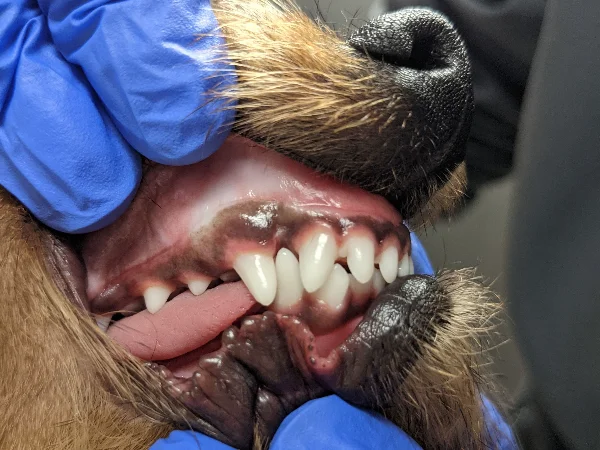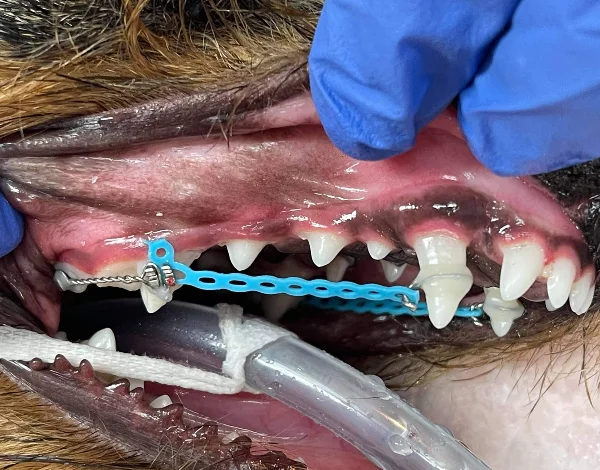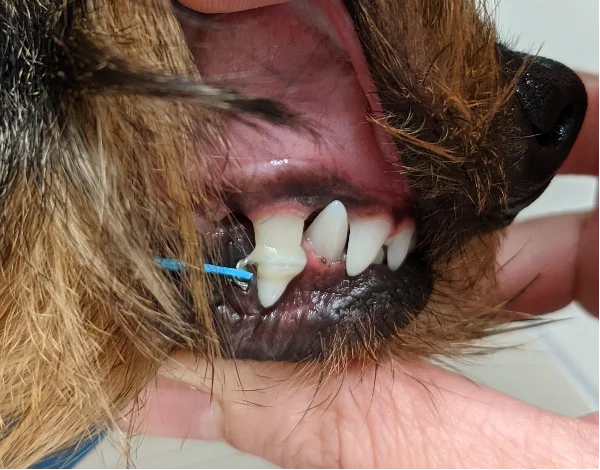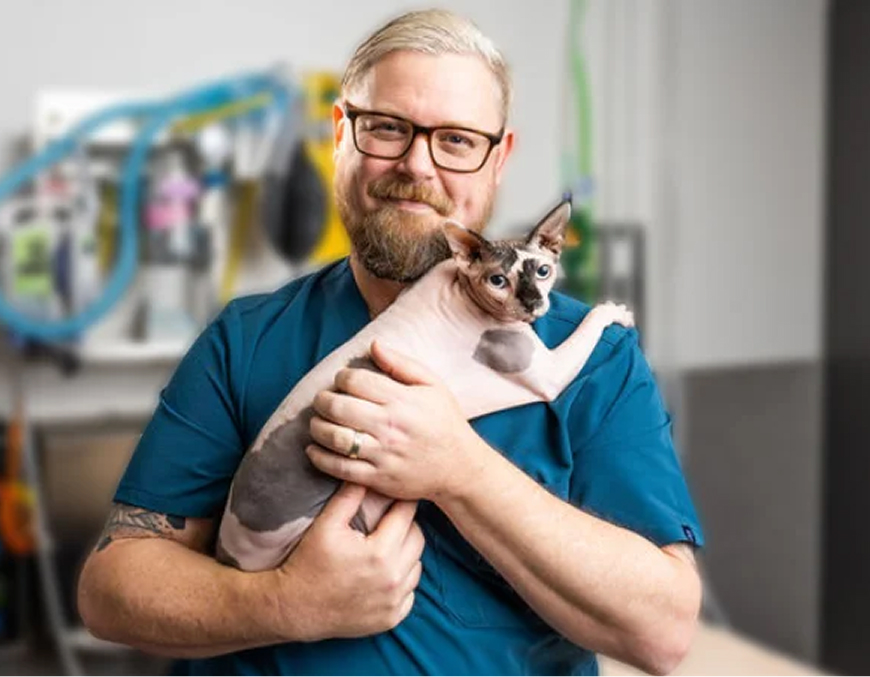Removing complex teeth safely and with minimal impact.
Dog braces (orthodontics) or masal chains can be used to correct poorly positioned and traumatic maxillary (upper) canine teeth ensuring proper bite function while maintaining tooth shape and size. We typically perform orthodontic procedures in young patients during or just after the eruption of their permanent teeth. Most often, we use these treatments to reposition traumatically positioned canine teeth.

Treatment with dog braces
A masal chain appliance (dog braces) is commonly used to address mesioverted or ‘lanced’ maxillary canine teeth and to manage linguoversion when the maxillary diastema (the space between the maxillary third incisor and canine teeth) is too narrow. This appliance helps widen the space available to accommodate the mandibular canine tooth.
When the maxillary canine tooth points forward, it narrows the space for the mandibular canine to erupt into. This frequently results in linguoversion of the mandibular canine teeth with subsequent trauma to the roof of the mouth from these teeth.
“Treatment typically lasts between 4 to 6 weeks, with regular visits required.”

Orthodontic Solutions for Malocclusion
Not every patient with a malocclusion is suitable for orthodontics. For those who are, these treatments provide an excellent long-term solution. They generally require less follow-up than treatments like crown height reduction and vital pulpotomy and are less invasive than extractions. Additionally, these procedures do not alter the size or shape of the teeth, preserving their full form and function. When successful, orthodontics will leave your pet with a functional and pain free mouth.
Orthodontic appliances for treating mesioverted maxillary canine teeth or widening the maxillary diastema apply a tipping force to reposition the maxillary canine tooth and expand the space between the maxillary third incisor and canine tooth. The masal chain is the most common appliance and is created directly in the patient’s mouth.

Orthodontic Technique for Maxillary Canine Adjustment
This orthodontic technique involves placing brackets on the maxillary fourth premolar and first molar teeth, which are then wired together to create a single anchor unit. A wire hook or similar device is attached to the maxillary canine tooth. An elastic chain connects the maxillary canine to the anchoring teeth, applying a distal tipping force to the maxillary canine.
Treatment typically lasts between 4 to 6 weeks, with regular visits required. During this period, the elastic chain may need tightening or replacement, usually achievable without sedation.
“Typically, a retainer is not needed, unlike with braces for people.”
Orthodontic Adjustment & Follow-Up
Over several weeks, the maxillary canine teeth are tipped distally (caudally) into a more correct position. Once the teeth align properly, we remove the appliance under a short anaesthetic. In many cases, a second orthodontic procedure may be necessary to correct the position of the mandibular canines if they are in a base narrow position (refer to inclined plane/crown extensions).
Typically, a retainer is not needed, unlike with braces for people. The canine teeth should lock into their correct position, providing a self-retaining effect (canine interlock).
Care & Maintenance for Orthodontic Appliances
For most patients, this procedure goes smoothly and is generally uneventful. However, the appliance is not indestructible, so it’s crucial to avoid any rough mouth play to prevent damage and avoid additional repair costs.
While wearing an orthodontic appliance, plaque build-up can occur more readily. Therefore, maintaining a higher level of homecare is essential.
This includes gently brushing around the appliance and using a gel or rinse designed to reduce plaque bacteria. These steps help to keep the mouth clean and fresh, preventing unpleasant odours and potential complications.














